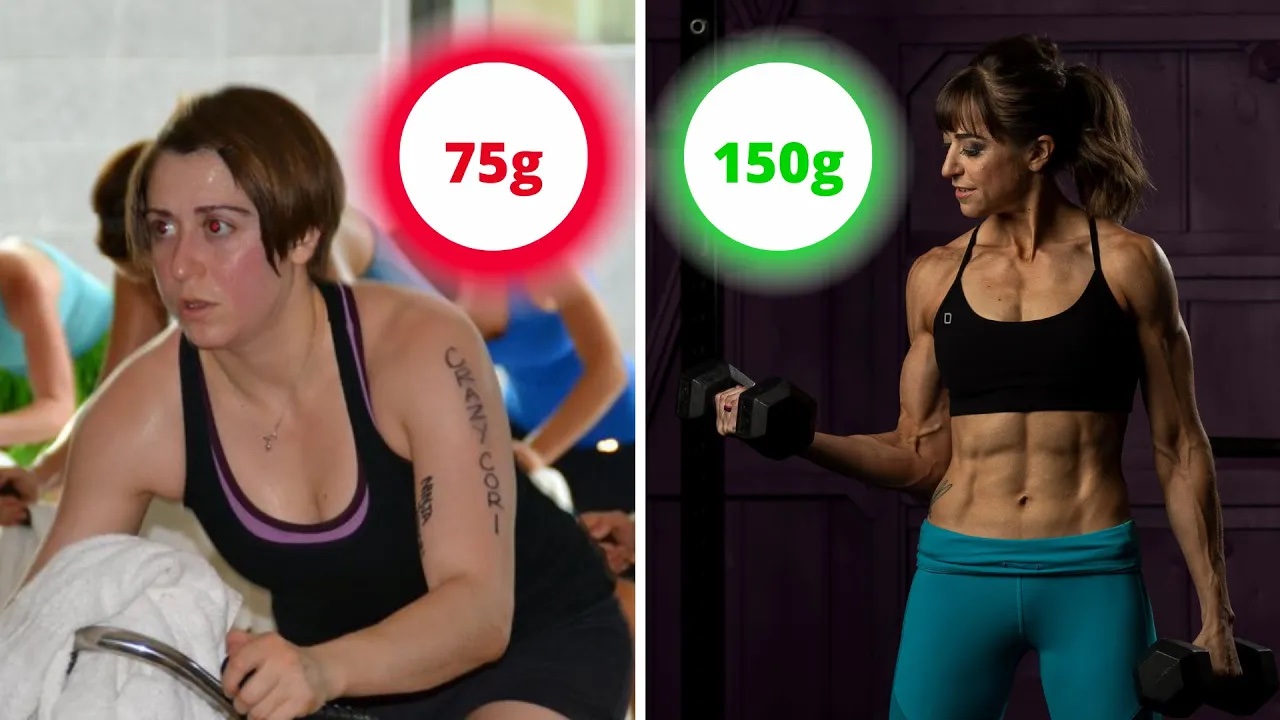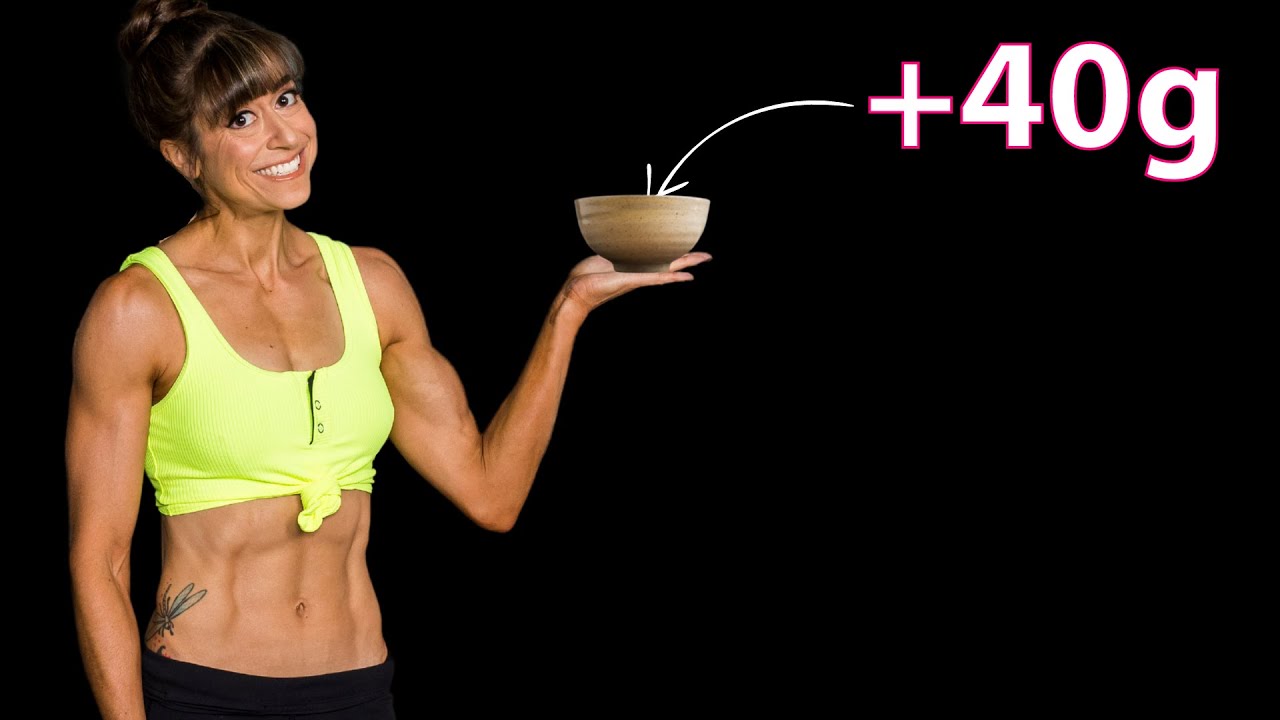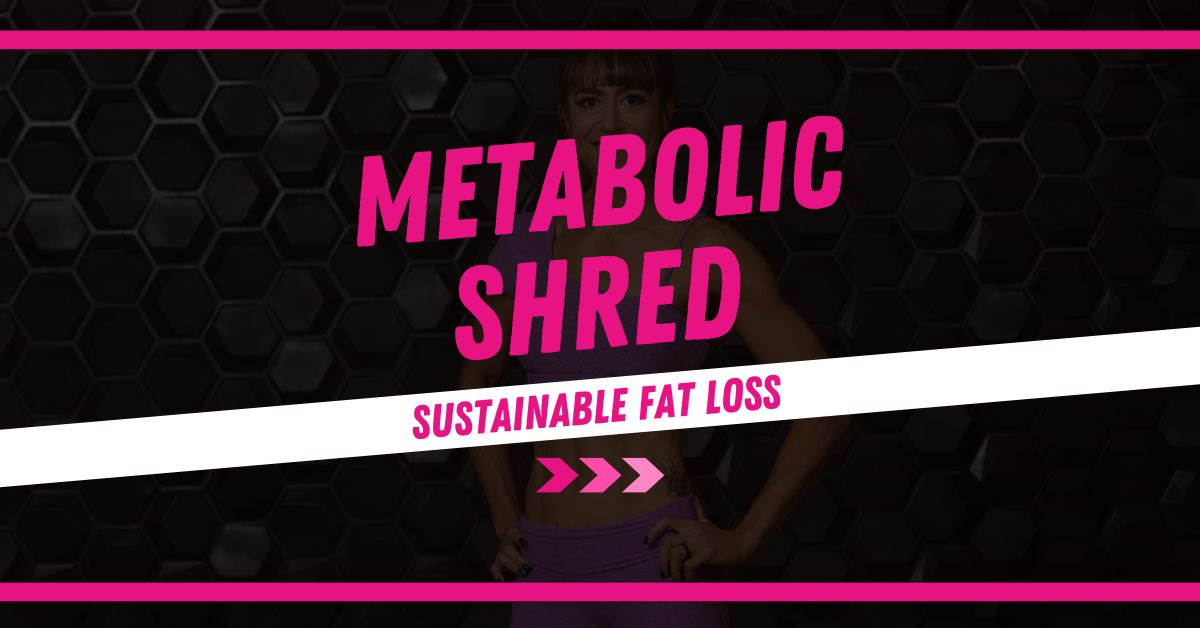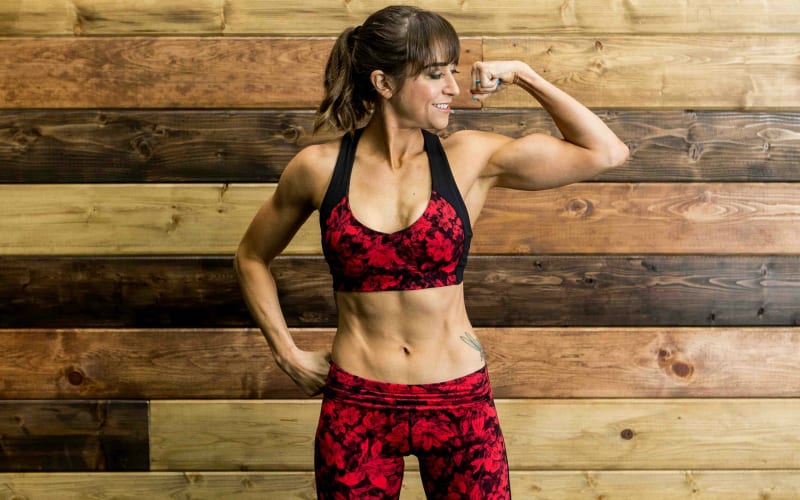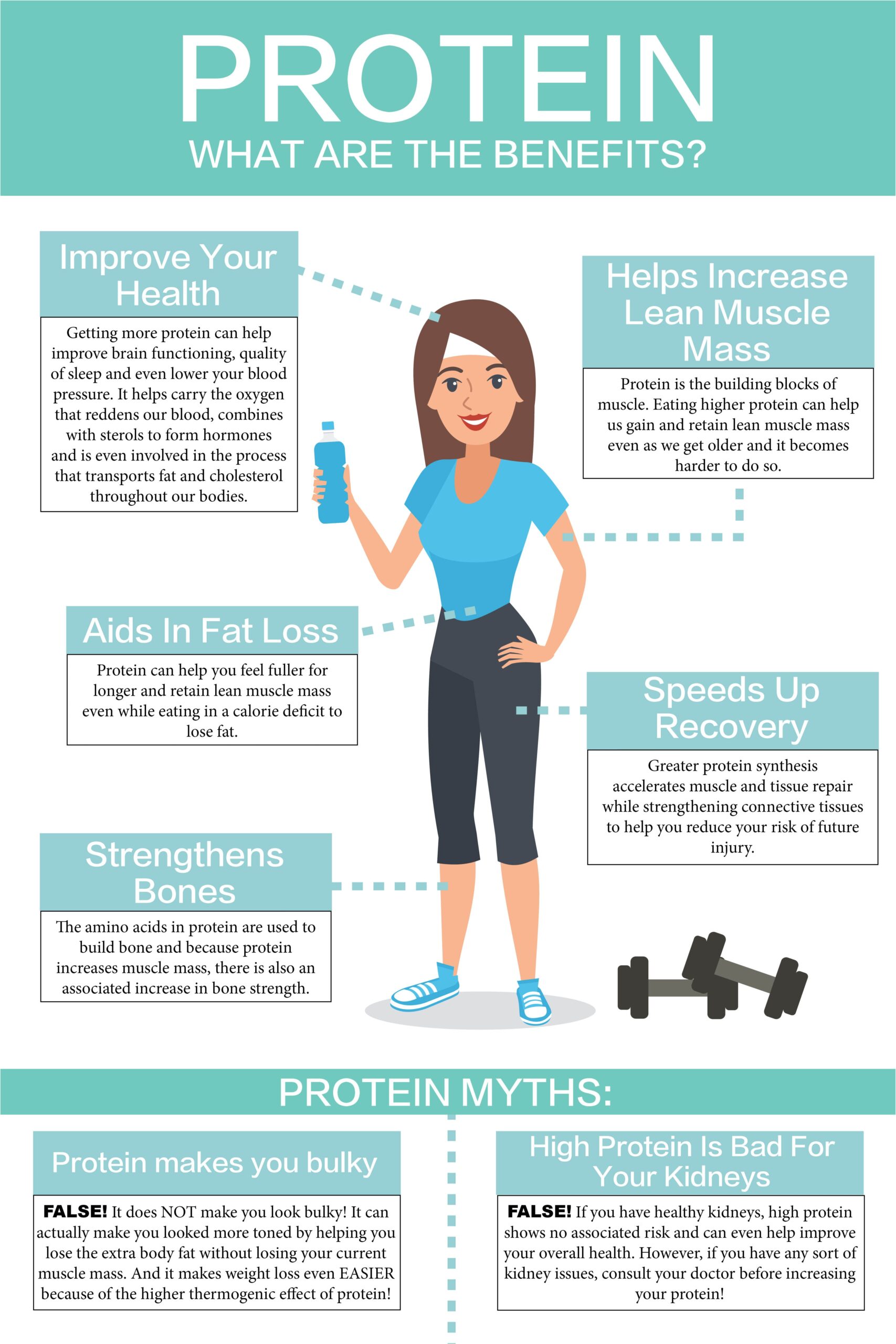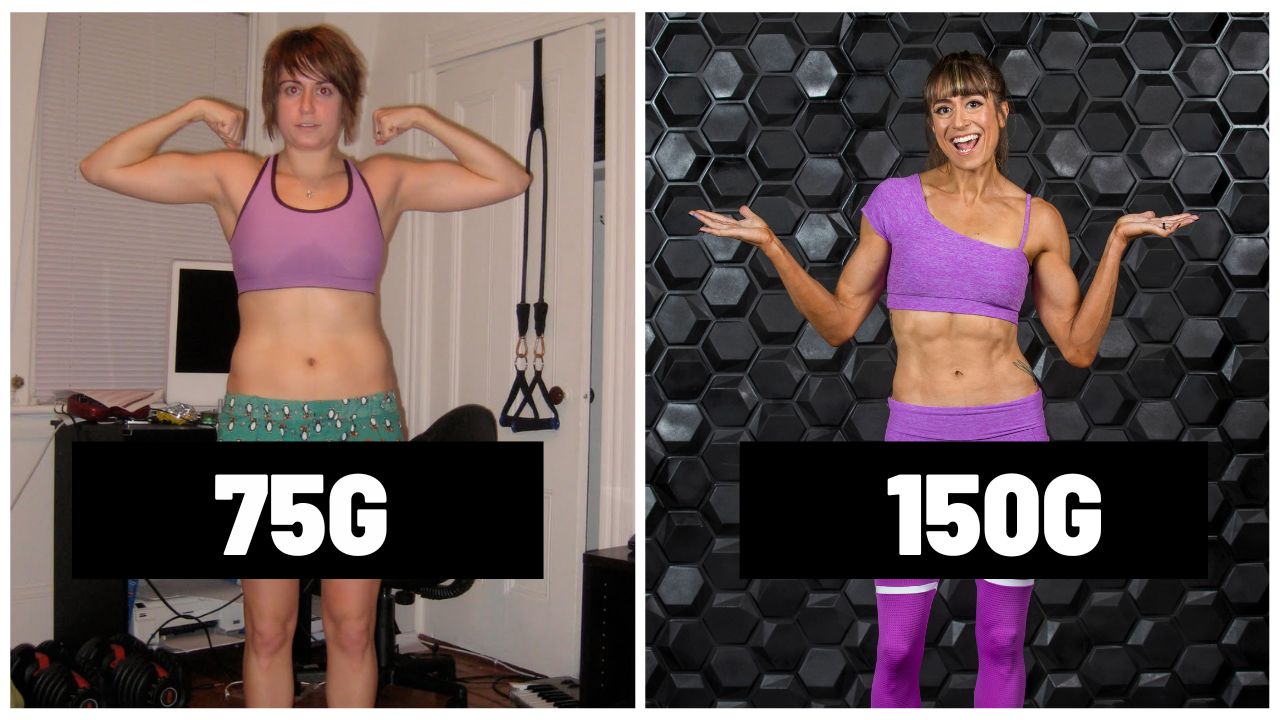
7 Things I Wish I Knew About Eating More Protein
Changing your portions is hard. You can’t just eat meals the way you’ve always eaten. That does require some planning ahead to start.
And protein isn’t often the thing we just have lying around or want to snack on.
That’s why these 7 tips can help you start to adjust your macros, increase your protein and all while meeting yourself where you are at to still include meals and foods you enjoy!
Because the more foreign a change feels to start, the more resistant to repeating it we’ll be.

That’s why tip number 1 and where I like to start with increasing protein is simply to add an ounce of the current protein I’m eating.
If I want BBQ chicken and fries for dinner? Instead of feeling like I can’t have a meal I love, I add an extra ounce of chicken.
Small changes made this way lower our resistance to the change in general. And they add up.
Too often we do these massive overhauls over seeing the tweaks we can make.
So at your next meal, take your current protein and add an ounce.
Doing this to multiple meals in a day may surprise you by how much it adds up.
From there, you may find it easier to make bigger changes and even find new recipes that increase your protein intake!
But increasing protein doesn’t mean having to cut out dishes you enjoy!
Small changes to other ingredients in your meals can also help you boost protein.
That’s why tip #2 is to Protein-ify those carbs!
Swap your normal pasta for edamame or lentil pasta. Swap quinoa for rice. Try even buckwheat noodles.
You’ll be amazed by how many options there are to sneak in protein to other components of your dish to boost your amino acid intake, while even getting in other micronutrients.
And you can find swaps that allow you to still enjoy recipes you love, and that your family won’t mind even, while hitting your macros.
Even swapping your normal bread for something like an Ezekiel Bread made from sprouted whole grains and legumes can boost your protein as well as your fiber (win win in my opinion).
And again, you can still enjoy the meal you love to create lasting changes.
You can also sneak in those extra grams while boosting your micros and the flavor of your meals with tip #3…
Use protein sprinkles and seasonings.
No I’m not talking about some fake processed protein powder seasoning…I’m talking about things like nutritional yeast, parmesan cheese and even hemp, flax and chia seeds.
These things are easy to throw in so many dishes and use in different ways. And while small protein increases, they add up.
And they often pack in more micronutrients while adding flavor and diversity to our diet. All of which only help us create lasting changes while improving our health and results.
Nutritional yeast can be great to season your main protein source and add a cheesy flavor while being plant-based.
Parmesan cheese adds that cheesy flavor while adding that bit of salt as well.
And chia, flax and hemp seeds are great to add to smoothies or even salads for a nutty flavor and amazing fiber and healthy fat boost too.
Don’t ignore the value that those grams can have.
And then don’t write off dairy either.
If you’re lactose intolerant, this tip may not be your go-to, but you may also be surprised by how many lactose-free options there now are for you too!
So yes, tip #4 is to boost your protein by using dairy!
Things like too good cottage cheese not only come in lactose-free options, but they pack a protein punch while also helping us keep our gut healthy with probiotics.
Cottage cheese and even things like greek yogurt can be used in both savor dips or dishes but also sweet treats.
The options to use these dairy products, and even have individual serving packs to grab and go, make them a great way to easily bump your protein, especially for snacks.
I know personally I love making dips with them for veggies to snack on or even a sweet cheesecake type dip for fruit.
But use dairy to your advantage as it can often be easily combined with other protein sources as well to increase your intake without boredom!
Which brings me to tip #5: Double up that protein at meals.
By doubling up, I’m not saying to double your current source of protein at a meal and eat 8 ounces instead of 4.
That’s what creates protein fatigue and us hating having to increase our protein.
What I mean by doubling up is focusing on two different protein sources at a meal.
Like take adding in dairy to a dish. Combine that cottage cheese with hardboiled eggs and mustard for a high protein egg salad you can eat with pita chips or as a sandwich.
Or if you’re making an omelet? Add shrimp AND steak.
That even helps you get more protein with 3 different types so you don’t feel like you’re just chowing down on the same boring thing!
Think about ways you can split the amount you need between multiple protein sources to avoid that protein fatigue and allow you to add ounces more easily.
You may be surprised by how hard it felt to eat 4 ounces of the same protein but how easy it is to get 6 ounces at a time when you only have to eat 3 of each!
And then embrace the different forms of protein and cuts of meat you have available to you.
Have you ever felt like every time you try to increase your protein your fat goes up to?
This is where looking at the opportunity in different cuts of meat can help!
Chicken breast vs chicken thigh has very different macros. Even the type of ground chicken you can get can vary.
Ground beef can be everything from 80% lean to 96% lean.
This is opportunity! You can still include proteins you like whether you vary the cut fully or even combine two different options.
Knowing that different proteins have different ratios of fat to protein, you could combine a fattier cut of steak or chicken with shrimp to overall balance out fat.
Or you may swap your usual ground beef for a lower fat option at times.
The key is you can find different cuts that work for you. Even with seafood.
Want more fat and love fish? Try salmon. But want to lower your fat? Try cod.
See the options in different types of similar proteins by learning more about the different cuts to use that to your advantage.
And that last but not least, tip #7: Eat it early!
I don’t know about you, but I love my dessert. And I’m sorry, ounces of chicken doesn’t count.
I make sure I’ve planned in my favorite carb and fat heavy treat to the end of my day and gotten my protein in early.
What really helps with this too is getting a bigger portion at breakfast or lunch.
Whether it’s starting my day with a greek yogurt parfait and even a coffee protein shake or omelet, I’m getting 30-40 grams in that first meal.
The more you plan to get in more protein earlier, the less behind you feel and the more flexibility you give yourself later.
This allows you to easily include meals you truly want and enjoy, especially if they’re meals with the family that may be out at restaurants or more carb and fat heavy.
This allows you more wiggle room and less stress when you aren’t fully in control of what you’re eating later in the day!
Planning ahead gives us the power to create that lifestyle balance while also reaching our goals.
So don’t leave yourself a chunk of plain protein to have to eat at the end of the day.
Plan it in first!
And use all 7 of these tips to meet yourself where you are at and make sustainable changes that allow you to increase your protein, adjust your portions and reach your goals!
Dial in your diet to match your workouts and build your leanest, strongest body ever with my Metabolic Shred…
–> LEARN MORE

